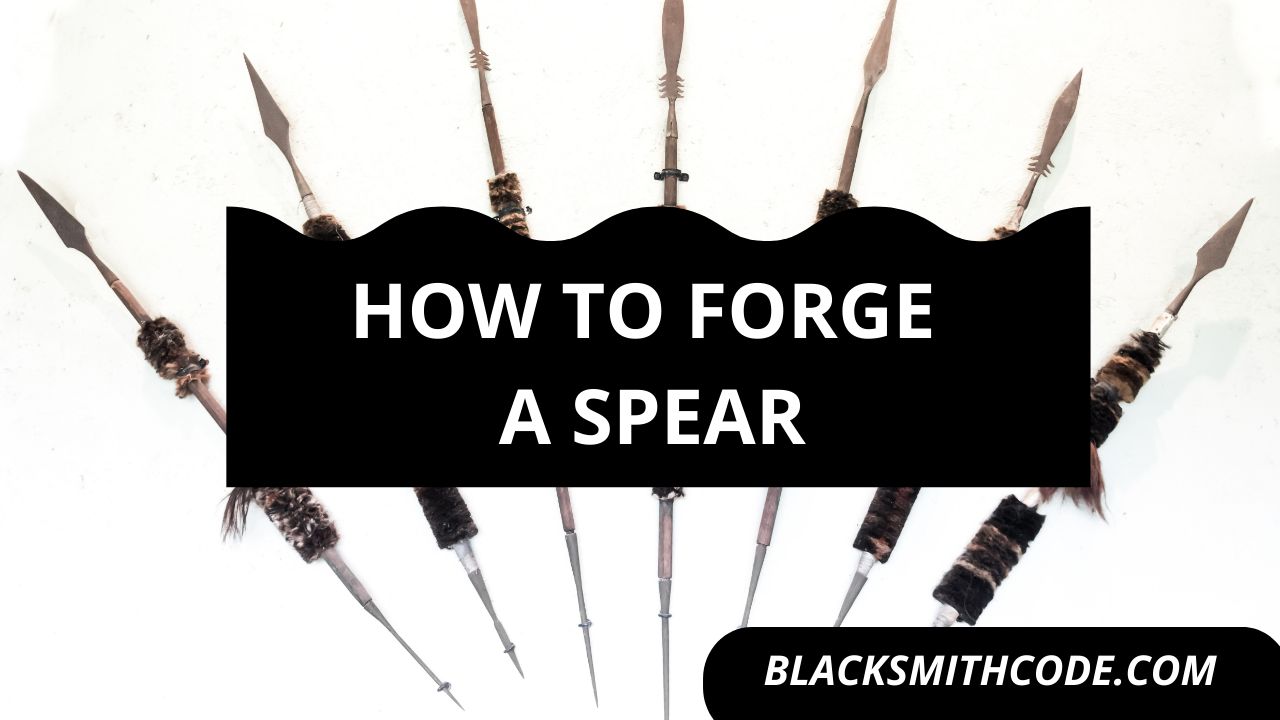Do you want to make a tool of high agricultural use? Forging a flail is an essential skill a blacksmith should consider adding to his wealth of skills. It is a product that can serve as a weapon and a tool for agricultural purposes.
A flail is useful in agriculture for threshing and separating grains from their husks. It also has spikes around its ball head that makes it suitable as a weapon. On most occasions, farmers often use the tool for both purposes.
A flail is usually made with one or two sticks attached to a chain and a spiked ball. The stick is held and swung to make an impact. If you hit the spike against a pile of grains, it will separate the grains from their husks.
Likewise, as a weapon, striking the material against any enemy will cause severe damage. Therefore, a flail is effective for anything you want to use it for after making it.
The flail structure makes it appear not very easy; however, it is often easier to hold as soon as you lay your hands on it. The guide below will take you through one of the easiest techniques of forging a flail.
Instructions on How to Forge a Flail
Step 1: Get Your Materials
It is essential to have all your materials ready before you start the process. For this project, you need strong metallic chains, several small rods for making the spikes and the anchor, block of steel, and markers.
Step 2: Form The Ball Head
The ball head is the part of the flail where you would attach the spikes at the edge of the tool. This head can take any shape, but for this project, it will take a ball shape. It is one of the most technical steps while learning how to forge a flail.
Quick Steps
- Heat the steel to a malleable temperature.
- Hold the steel block with your tongs and hammer in a rounded manner to give the shape of a ball.
- You need to deliver high power blows to the steel block if you intend to make a significant impact.
- Hammer technically to keep the steel progressively rounded. Remember, you are not flattening the steel; therefore, you should avoid hammering down.
- Continue the process until you have a completely round shape.
Step 3: Form The Spikes
You can attach as many spikes as you desire. The number of spikes you will be attaching is dependent on how you want the tool to look like at the end. However, one of these spikes needs to be bent.
The bent spike will serve as a point of attachment between the ball head and the chain.
Quick Steps
- Measure and cut the small rods. You can either decide to make all the rods at equal length or vary the length.
- Cut the number of spikes you would love to include to the head and take it to the forge one after the next.
- It is not advisable to place the entire rods in the forge at the same time. You can place the next one in the forge while working on one.
- Once the rod reaches a workable temperature, take it out of the forge and to the anvil.
- Hammer down the tip until it becomes pointed. You can decide how pointed it will be based on your intending purposes.
- Repeat the process until the last spike. Making the last spike is slightly different because it will serve as a point of attachment to the chain.
- You have to bend the tip of the last spike inwards to form a hook.
Step 4: Attach the Spikes to the Ball
This step is one of the most technical processes. It is time to attach individual spikes to the ball head. Use a suitable joining technique for this process.
Quick Steps
- Measure and mark each spot on the steel ball where you want to attach each spike. Take special note of the point you would be attaching the hook.
- You can use a drill to bore sizable holes where you would be attaching the spikes.
- Forge weld or use any other suitable method to join the spikes solidly to these points.
- Ensure that all the points of attachment are solid enough to withstand the impact on the product.
- The hook should be the last one to be attached.
Step 5: Join the Hook to the Chain
This is one of the easiest parts. Simply insert the last ring of the chain through the opening of the hook and close it tightly.
Step 6: Fix the Handle
You would be attaching the other end of the chain to a handle. The handle can either be wooden or metallic. The type of handle you are using would determine the forging technique to use.
If it is a metallic handle, you might have to forge the last ring of the chain with the metal. Wooden handles usually demand some drilling to form the point of attachment.
FAQs on How to Forge a Flail
Question
Is flail a real weapon?
A flail can serve the dual functionality of being a weapon and a threshing tool for farming. It is a medieval weapon that is useful during a war. Some people used to refer to it as military flail in the early years.
Question
How heavy should a flail be?
The weight of a flail is very pivotal in its effectiveness. A flail should be heavy enough to leave a high-power impact when you swing it. However, it should not be too heavy for you to swing easily.
Question
Who uses a flail?
The medieval ages, flails were principally used by knights and other military fighters. However, in recent times, a flail is now more of a farming tool than a weapon.
Video on How to Forge a Flail
Warnings and Precautions
- Be careful while fixing the spikes to prevent it from pricking your hand.
- Handle all hot steel with tongs to prevent burns.
- Use protective coverings, including ear coverings, because of the large bangs that come from repeated hammering.




